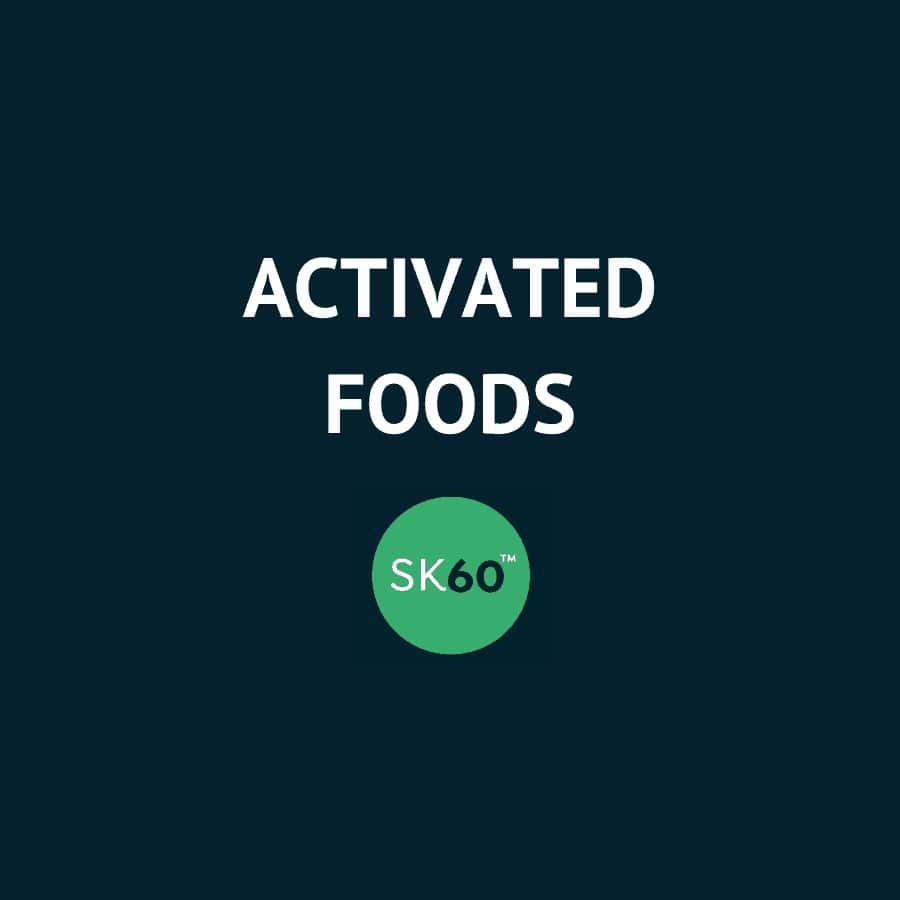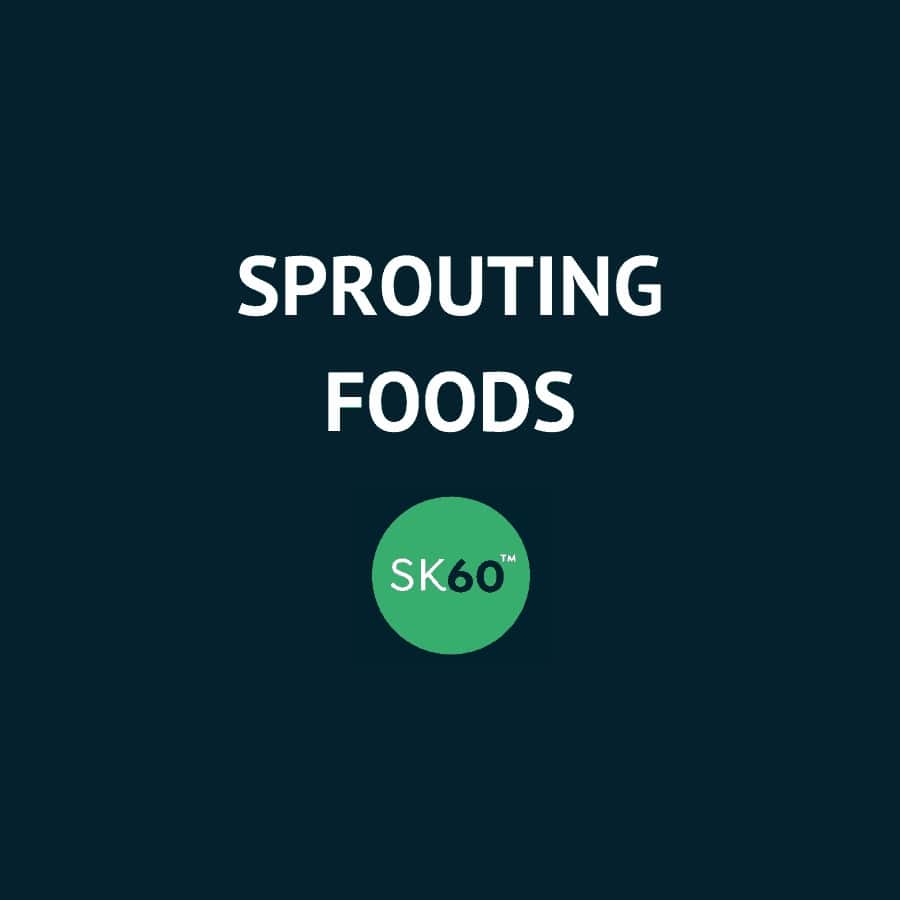Table of Contents
Why you need to prep your foods
Nuts, seeds, and grains contain natural protective toxins (phytic acid) in their bran and hulls that act like armor, protecting the foods from germination until the conditions are perfect to sprout into healthy plants. This brilliant natural mechanism also prevents these foods from sprouting in your pantry.
However, when nuts, seeds, and whole grains are ingested, their phytic acid "armor" interferes with enzyme function in your body and compromises your digestion. Phytic acid can also inhibit your absorption of calcium, iron, magnesium, and zinc.
Soaking nuts, seeds, and grains starts the sprouting process and neutralizes the phytic acid, which activates the nutrient potential of the food and the enzymes that aid in their digestion.
Rinsing and toasting nuts, seeds, and grains is a quicker way to remove some of the phytic aid, but not all of it.


GOOD: Toasting
Toasting raw nuts and seeds (that have not been soaked before) is a quick way to make them more digestible. Rinsing and toasting helps to remove some of the phytic acid, but not all of it, and it does not activate the full nutrient potential of the food like soaking does.
But, if you’re pushed for time and need those nuts and seeds, toasting is a great option to reduce the stress on your belly! AND toasting nuts and seeds make them taste absolutely delicious.
HOME-TOASTED VS COMMERCIAL ROASTED
Home-toasted nuts and seeds are not the same as “roasted” or ‘toasted” nuts and seeds you purchase at the store. We don't use these commercially available varieties in the Skinny60® recipes as they are processed using low quality oils and refined salts and flavorings. These foods rarely taste fresh, and are often rancid.
Continue Reading
How To Toast Nuts and Seeds
- Preheat the oven to 300°F (150°C), and line a rimmed baking sheet with parchment paper.
- Measure out 2 cups of your chosen nut or seed. Seeds need rinsing before toasting to remove any dust and dirt. Nuts do not need to be rinsed. Place the seeds in a medium bowl, cover with filtered water. Swish the seeds around, and strain with a fine-mesh strainer.
- Spread the drained seeds in a single layer on the prepared baking sheet, and place in the middle rack of the oven. Toast for the prescribed time using the list below (eg 10 minutes), then remove from the oven, toss, and then toast for the further amount of time prescribed (eg 10 minutes).
- Remove from the oven, taste one, and once crunchy and they crumble within your fingers, they are ready. If not, place back in the oven for a minute at a time, until they are done.
- Once done, transfer the parchment paper with the seeds from the hot baking sheet to a cutting board to cool, or the seeds will continue cooking, which you don’t want.
- Once completely cooled, transfer the toasted seeds to a sealed glass jar, and store in the fridge, or a cool dark pantry.
TOAST TIMES
- Almonds: 10 minutes, stir. Then, 8 to 10 minutes more, until insides are light brown.
- Sesame Seeds: 10 minutes, stir. Then, 10 minutes more, until fragrant and easily crushed between your fingers.
- Pumpkin and Sunflower Seeds: 12 minutes, stir. Then, 12 minutes more, until puffed and fragrant.
- Walnuts and Pecans: 4 to 5 minutes (pieces) or 6 minutes (halved and whole), until crisp and fragrant. For walnuts, rub between your fingers to remove papery bitter skins.
- Hazelnuts: 10 minutes, stir. Then, 4minutes more, until insides are light brown. Rub between your fingers to remove much of the brown papery skins.
Download the Toasting Cheat Sheet for a full list of foods and toast times.
USER A TIMER
Use a timer so you don’t burn your nuts and seeds. Cooking times may vary depending on the accuracy of your oven temperature and the amount of nuts and seeds. If you toast more than the amount prescribed, they will take longer. Be sure to place the food in single layers so that they toast evenly.
USE PARCHMENT PAPER
Use parchment paper so you can slide them off the trays the moment you take them out of the oven as they will continue cooking. Reuse the parchment paper to reduce waste.
STORE AND CRISP UP
All toasted nuts and seeds will last longer if you store them in the fridge. If your toasted foods lose their crunch, place them in the oven at 300°F (150°C) for 5 minutes or more to crisp them up again.


BEST: Purchase Activated Foods
This is the easiest way: let somebody else do the work for you, and purchase activated (sometimes labeled “sprouted” nuts, seeds, and grains online or from a health food store.
See our SHOP for brand recommendations in the pantry or snacks section. But, here are the top ones:
UNSALTED (for use in recipes)
SALTED (for snacks)


How To Use soaked foods
NOTE:
Freshly soaked and drained nuts, seeds, and grains (that are still wet) need to be used immediately. Cook the grain (see notes about adjusting cook times below), or use the nuts and seeds to make fresh nut milks, creams, smoothies, soups, and desserts.
When you use long-soaked nuts and seeds wet it does shorten the shelf-life of RAW RECIPES as the wet food is semi-fermented. So, recipes such as nut milks, raw sauces, cheeses and dressings, ice creams, etc will only last 2 to 3 days.
A BETTER APPROACH:
I soak and dehydrate all nuts and seeds (except chia seeds, hemp seeds, and flax seeds that NEVER need to be soaked and dehydrated) as soon as I purchase them. I then store them in sealed glass containers in the pantry or fridge.
Then, when I need them for a recipe, I either use them activated and dry (for a crunchy element for salads and toppings etc) OR I quick-soak them (pour boiled water over them for 10 minutes) just to soften them for the best texture for sauces, dressings, smoothies, and desserts. When you use soaked and dehydrated (activated) nuts and seeds and then quick-soak them right before you need to use them in a recipe, your dish will last longer, typically 5 to 7 days in the fridge.
Continue Reading
Adjust the cooking time for soaked grains
When cooking soaked grains, use about half the water you would to cook unsoaked grains.
As a general rule: Use a one-to-one ratio (by volume) of water to soaked grain to cook them to al dente.
When using soaked grains in recipes, start with half the liquid called for, and add more liquid as needed to reach the desired consistency.


